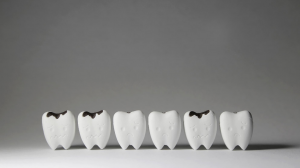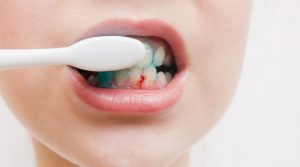Over 80 per cent of Singaporeans have mild to moderate symptoms of periodontal (gum) disease, according to a 2003 report by the Health Promotion Board (HPB). 17 years later, the numbers have continued to rise and gum disease remains a big concern. When treated poorly, bacteria in the plaque can build up, harden and form “tartar” that normal brushing can’t properly clean. In advanced stages, it can cause an infection of the tissues that hold your teeth in place or worse.
It might be presumptuous to think that one small tooth problem can be that big of a deal. But severe gum disease has been linked to an increased risk of developing diabetes or pre-diabetes among dental patients. Higher blood sugar levels in diabetics lead to an exaggerated inflammatory response from the harmful bacteria in the gums leading to gum and bone loss known as Periodontitis. Diabetic patients with periodontal disease also have a higher chance of developing diabetic complications.
Additionally, periodontal disease is also a significant risk factor for a heart attack or stroke. Patients with severe periodontitis have a 3.5 times higher risk of dying from heart disease or kidney disease than from patients with mild or no periodontitis. Many pregnant women are predisposed to developing periodontal disease as well. During pregnancy, the hormonal changes in a woman will promote an inflammatory response, which increases the risk of developing gum disease. If not treated, it can be a risk factor in preterm delivery, preeclampsia, and low birth weight.
How can you tell if you have gum problems?
- Gums that bleed even with gentle brushing
- Red and swollen gums
- Persistent bad breath from your mouth
- Receding gums from your teeth
- Hypersensitive teeth
- Gaps forming between your teeth as a result of teeth movement
Here are 5 common myths about gum disease we hear from our patients occasionally. Keep on reading to learn more about them and how you can keep your gums strong and healthy:
 Myth 1: Teeth are more important than gums.
Myth 1: Teeth are more important than gums.
Both your teeth and gums are interconnected, so they are equally important. The gums are an important barrier to protect your teeth. If your gums are infected, your teeth may lose its support and this can lead to loosening of the tooth, eventually leading to tooth loss. The teeth, on the other hand, when it has defective fillings or cavities act as a source of bacteria accumulation resulting in inflammation of the gums, it eventually leads to bone loss.
Myth 2: No cavities mean no gum disease.
Just because you don’t have any cavities, it does not automatically rule you out of gum disease. For a majority of people, gum disease is painless and asymptomatic, so it is not noticeable until it further develops in the later stages.
In the earlier stages, while it’s still recognised as Gingivitis, you may notice red, swollen or tender gums. Why does this happen? If you do not practice good oral hygiene by daily brushing and flossing, it can cause a buildup of plaque along your gumline that will irritate your gum tissues. When it’s not treated early, it can lead to advanced stages of gum disease, which could result in the loss of teeth.
 Myth 3: Children can’t get gum disease.
Myth 3: Children can’t get gum disease.
Gum disease is often associated with adults. However, it does not mean that children can’t get it too. As mentioned earlier, gum disease may not present obvious symptoms so it can be tricky for you to identify in your little one. The treatment also depends on the symptoms your child may be having, their age and overall health. Certain medications that your child may be taking may result in red and swollen gums too.
Myth 4: You can ignore the signs of bleeding gums.
Do you find your gums bleed easily? This could be due to your aggressive brushing or flossing, or it could just be an early sign of gum disease. Many studies have proven the link between diabetes and gum disease can go both ways. In other words, you really should not be ignoring the bleeding signs.
For diabetic patients, dry mouth is a common symptom; when there is a lack of saliva, you are naturally more susceptible to infections like gum disease and cavities because saliva protects you against disease-causing bacteria. Furthermore, diabetic patients usually experience higher blood sugar levels and this can often make it harder for your body to heal, thereby making gum disease worse.
 Myth 5: Poor oral hygiene is the cause of gum disease.
Myth 5: Poor oral hygiene is the cause of gum disease.
While poor oral hygiene can cause gum disease, other factors could increase your risk of getting it too. For example, smokers and users of tobacco are two to six times more likely to develop gum disease. One of the many causes of this is that smoking affects your body’s natural defence mechanism to fight infections. Smokers also do not show clinical signs of gum disease as the bleeding in gums is reduced as Nicotine reduces the blood flow in the gums. Smokers may, therefore, have severe gum disease and not realise it as the usual signs of bleeding gums may be absent. This results in the destruction of gum and bone tissue. Smokers are also more likely to develop oral cancer.
Gum disease doesn’t just develop overnight, it happens gradually. The best way to prevent yourself from getting it is to visit your dentist regularly. If you’re due for a dental checkup or suspect you may have gum issues, come book an appointment with us here!
Have a specific topic that you would like us to talk about? Just let us know!




